Imagine walking into your brand-new home, the paint is fresh, the floors gleam, and everything smells new - except there's an odd mustiness in the air. The last thing you'd expect is mold. Yet, this is becoming a more common reality for many new homeowners. Mold isn't just a problem for old, neglected buildings; it can appear in brand-new constructions, bringing with it a host of issues, from health concerns to costly repairs.
Understanding why mold is showing up in new homes is crucial. It's not just an aesthetic issue; mold can have serious implications for your health, particularly if you or your family members have allergies or respiratory conditions. The financial burden of mold remediation and the potential loss of property value can be significant, making this a topic worth your attention.
FDP Mold Remediation has seen firsthand how this issue can sneak up on unsuspecting homeowners. Specializing in mold remediation, we have dealt with cases where mold has invaded even the newest of homes, highlighting the importance of early detection and prevention. In this post, we'll explore the underlying causes of mold in new construction and provide you with actionable steps to ensure your new home remains mold-free.
There's a common misconception that new homes are impervious to mold. After all, everything is fresh, new, and untouched. Why would mold be a concern? Unfortunately, this is far from the truth. New construction projects can and do experience mold growth, often to the surprise of homeowners and builders alike.
Mold in new homes is not just a cosmetic issue; it's a serious problem that can have significant health impacts. Mold spores, when inhaled, can cause allergic reactions, respiratory issues, and even more severe health problems in vulnerable individuals. Beyond health concerns, mold can also lead to financial headaches. Remediation can be costly, and if left unchecked, mold can damage your home's structure, leading to even more expensive repairs.

Construction delays are more than just a scheduling inconvenience; they can be a breeding ground for mold. Weather is one of the biggest culprits. When rain, snow, or humidity disrupt the construction timeline, unfinished interiors can be exposed to moisture. This moisture can seep into building materials and create the perfect environment for mold to grow. Even if the construction picks up later, the damage may already be done, with mold spores quietly multiplying behind the scenes.
Water has a way of sneaking into places it doesn't belong, and new construction is no exception. Poorly installed windows and doors are common entry points for moisture. If these elements are not properly sealed, rainwater can leak inside, settling into walls, floors, and ceilings. Additionally, any gaps or cracks in the building's exterior can allow moisture to enter, leading to mold growth. Inadequate sealing of building materials, such as improper flashing or missing caulking, can also contribute to moisture intrusion, exacerbating the problem.
The materials used in construction can be highly susceptible to moisture. Wood, drywall, insulation - these materials are like sponges, absorbing water when exposed to it. If materials are not stored properly before they're used in construction, they can become damp, setting the stage for mold growth. For example, if lumber is left out in the rain or insulation is stored in a humid environment, these materials can retain moisture, which can later lead to mold problems once the building is completed.
Using an HVAC system in a new home is supposed to create a proper climate indoors but if the system is installed improperly or used too soon it plays a role in developing mold. Some of the concerns that some building owners may experience when they run the HVAC system include when the building is not fully sealed or before people move in may lead to generation of excess moisture. This moisture may condense forming a good environment for the fungus to grow such as in the formation of molds. Furthermore, if the HVAC system is not well maintained often, it acts as a fan and circulates the mold spores in any room in the house, aggravating the situation.
Preventing mold in new construction starts with proactive construction management. One of the most effective strategies is to schedule work around the weather. Avoiding construction during periods of high humidity, rain, or snow can reduce the risk of moisture-related delays. Additionally, monitoring moisture levels throughout the construction process is crucial. Regular inspections and the use of dehumidifiers can help keep moisture under control, reducing the likelihood of mold taking root.
Another area that can also be prevented from mold development is the stockpiling of building materials where they must be kept dry at all times. A proper storage condition should also be maintained for the stored materials and it is preferably kept in a dry and controlled area or sheltered from the weather elements. Therefore, before using them in constructions they must undergo scrutiny to determine moisture presence or otherwise. It can help avoid situations when damp materials are used in construction of the home and thus minimizing chances of mold formation.
Some general maintenance to be followed are correct installation of windows, doors and insulation should be done so as to avoid seepage of moisture. Curtains and window treatments provide protection by also providing tight barriers that cannot allow water into the home. Likewise, the moisture resistant insulating materials can go along way in ensuring that the inside of the building does not get damp. Perhaps it is important to note that these elements, if well observed during the construction of the home, greatly reduce the chances of molds to develop.
This is especially important in term relating to the time that the HVAC system is functioning. There is nothing as devastating as switching on the HVAC system and only to be met by a flood due to lack of a sealed building envelope. If started too early it can cause introduction of moisture into the home which causes mold problems. Furthermore, checking on the state of the HVAC system over time is critical in order to determine whether it is doing more harm than good where moisture issues are concerned.
This situation is relatively frequent than most people could imagine, however it does not mean that new constructions are irresistible to mold. Knowing the primary factors like construction delay, water penetration or use of unsuitable construction materials for your new home, it could easily mean that mold may set in within your new home before you can even realize it. Especially during the constructions, an owner should be very observant and ensure that the building materials, as well as the systems to regulate temperatures, are also well managed to avoid molds in the newly constructed house.
Lastly, prevention is far easier and less costly than remediation. For builders and homeowners alike, taking mold prevention seriously is an investment in the long-term health and value of the home. If you're concerned about mold or need expert advice, consider reaching out to FDP Mold Remediation. With our experience and expertise, our team can help ensure that your new home remains the fresh, healthy environment you expect it to be.



